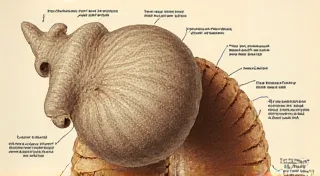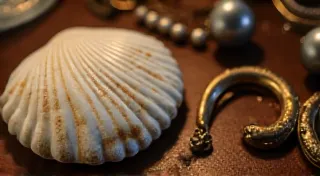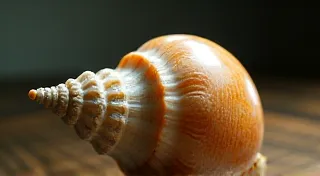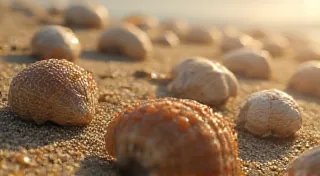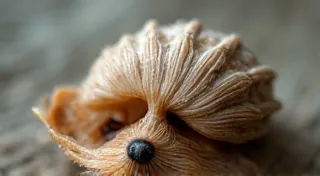Detecting Repairs & Fakes: Authenticating Vintage Shells
The world of vintage shell collecting is captivating, filled with the beauty and history of marine life from bygone eras. However, just like any collectible market, it's not immune to alterations and outright fakes. Knowing how to identify these can save you time, money, and disappointment. This guide offers insights into spotting repairs, alterations, and deceptive reproductions in the vintage shell market.
Understanding Why Alterations and Fakes Exist
The demand for rare and desirable vintage shells often drives unscrupulous individuals to manipulate shells. Sometimes, damage from age or natural wear is repaired to increase value. Other times, entire shells are fabricated to mimic genuine antiques. Understanding the motivations behind these practices can help you be a more discerning collector. The historical significance of these shells extends beyond mere aesthetics; they offer a window into the past, often appearing in vintage seashells rituals and symbolic practices across cultures. This further adds to their desirability and, unfortunately, their vulnerability to fraud.
Common Repairs to Look For
Many vintage shells have undergone repairs, some quite skilled, others more obvious. Here's what to watch out for:
- Chip and Crack Repair: Look for subtle color mismatches, unusual seam lines, or a slight change in texture where chips or cracks have been filled. Often, the repair material is a type of resin or glue, which doesn’t age the same way the original shell material does.
- Re-attaching Lip or Sections: Shells often break along the lip or other prominent sections. Careful inspection will reveal glue lines or mismatched textures where these pieces have been reattached. Examine the internal surface of the shell for signs of adhesive.
- Color Restoration: Natural aging can dull the colors of a shell. While gentle cleaning is acceptable, heavy color restoration can be a sign of an attempt to mask imperfections or artificially increase desirability. Look for unnatural uniformity of color or excessive gloss. Often, this goes hand in hand with other alterations meant to enhance the shell's perceived value, particularly when destined for use in vintage seashells jewelry and crafts.
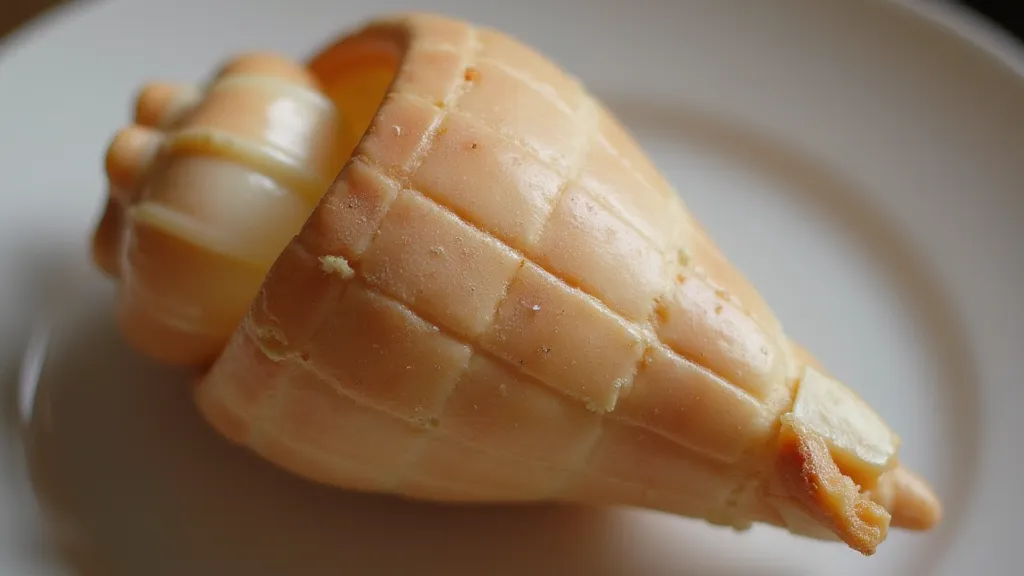
Identifying Fake Vintage Shells
Fake shells are becoming increasingly sophisticated, but with careful observation, you can often detect them. Here's what to look for:
- Shell Material: Genuine vintage shells are composed of calcium carbonate (aragonite or calcite). Fake shells might be made of plastic, resin, or other materials that feel noticeably different from the real thing. A simple scratch test can sometimes reveal the material.
- Porosity and Texture: Natural shells have a characteristic porosity and texture. Fake shells often appear too smooth, too perfect, or lack the subtle variations in surface texture found in authentic shells.
- Shell Shape and Details: Compare the shell's shape and details to known examples of the species. Fabricated shells often have anatomical inaccuracies or proportions that are slightly off. Distinguishing between genuine shells and fakes requires careful comparison with established examples, a skill greatly enhanced by studying the history of specific species—like the sought-after Olive shell. Learn more about the history and identification of the vintage olive shells identification.
- Weight and Sound: Authentic shells have a specific weight and a resonant sound when tapped. Fakes may feel lighter or produce a dull thud.
- Mold Lines: Some fake shells are cast using molds. Look for faint lines or imperfections on the surface that indicate the molding process.
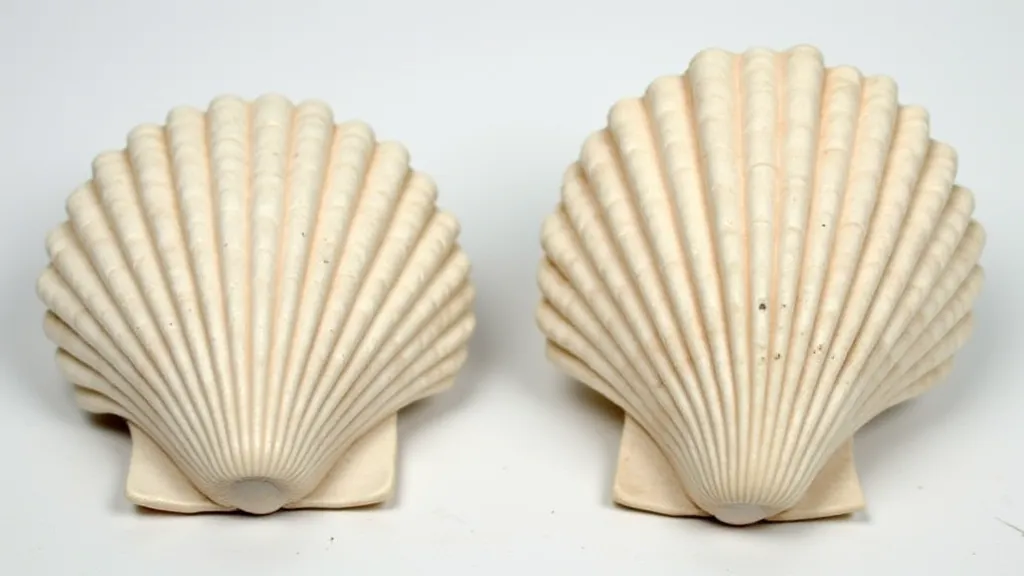
The Importance of Research and Expert Opinion
Authenticating vintage shells requires a solid foundation of knowledge. Thoroughly research the species you are interested in, studying authentic examples through books, museum collections, and reputable online resources. Consider consulting with experienced shell collectors or dealers who can offer expert opinions. Attend shell collector's club meetings. The era of shell collecting is closely tied to specific periods of design and cultural trends. Knowing the history, such as the prevalence of specific shell types during the 1920s-1950s, is key to assessing authenticity. Delve deeper into identifying vintage shells 1920s-1950s to expand your knowledge.
Deeper Dive: Material Properties and Examination Techniques
Beyond the obvious visual clues, understanding the material science of shells provides a crucial edge in identifying fakes. Genuine shells are largely composed of aragonite or calcite, both forms of calcium carbonate. These minerals exhibit specific optical and mechanical properties. For example, aragonite displays birefringence under polarized light, a phenomenon easily observable with a simple polarizing microscope – a tool often used by serious collectors. Conversely, fakes made of plastic or resin lack this property. Similarly, a density test can be informative; while not definitive, significant deviations from expected density can raise red flags.
The Collector's Eye: Recognizing Subtle Alterations
Experienced collectors often develop a 'collector's eye' – a sensitivity to subtle anomalies that might escape the notice of a novice. These can include inconsistencies in growth patterns (if the shell was deliberately manipulated during growth, a rare but possible scenario), unusual striations or markings that suggest hasty repair work, or an overall 'feel' that something just isn’t quite right. This kind of expertise is cultivated through years of observation, comparison, and interaction with other collectors.
The Ethical Considerations of Shell Collecting
As interest in vintage shells grows, so does the importance of ethical collecting practices. Ensure that any shells you acquire are sourced legally and sustainably. Avoid purchasing shells that have been illegally harvested or traded. Support reputable dealers who prioritize conservation and responsible collecting. Consider the impact your collecting habits have on marine ecosystems. Many shells, particularly those with unique coloration or patterns, are becoming increasingly rare due to over-collection and habitat loss. Responsible collectors recognize this and strive to minimize their impact.
The Questions to Ask Yourself
- Does the price seem too good to be true?
- Is the seller reputable?
- Does the shell exhibit any unusual characteristics?
- Does the shell match known examples of its species?

Conclusion
Detecting repairs and fakes in the vintage shell market is an ongoing learning process. By educating yourself, paying close attention to detail, and seeking expert guidance, you can confidently build a collection of authentic and valuable vintage shells. Happy collecting!
